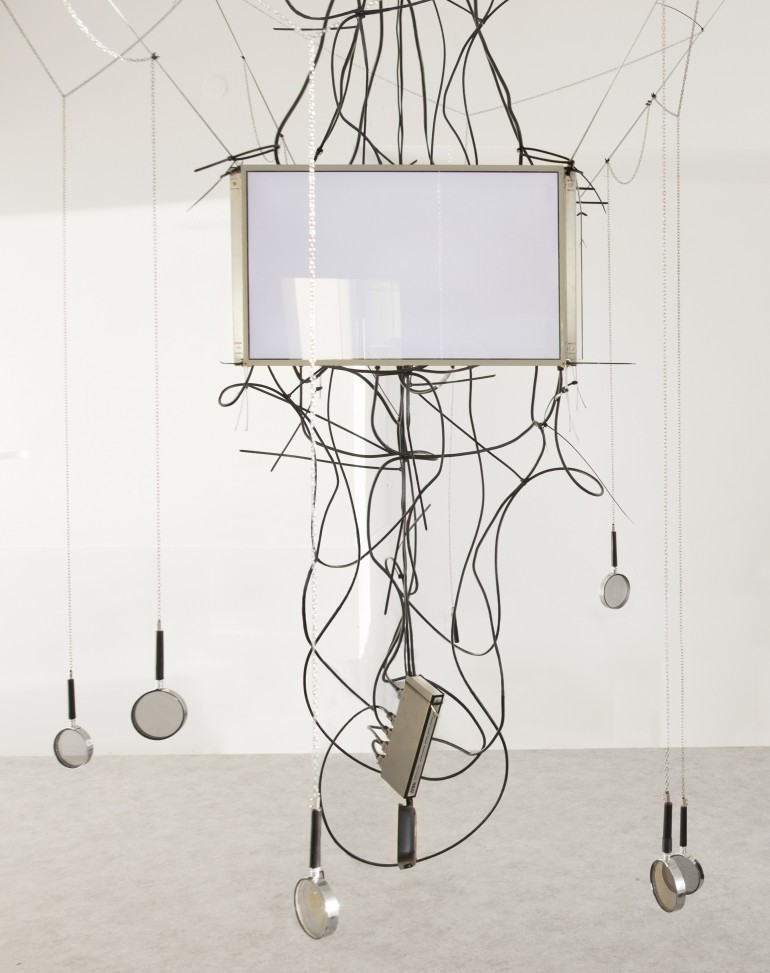HALO
SEMICONDUCTOR
HALO is a large scale immersive artwork which embodies Semiconductor’s ongoing fascination with how we experience the materiality of nature through the lens of science and technology. Taking the form of a large cylinder, the structure houses a 360-degree projection of scientific data while an array of 384 vertical wires are played by the same data, to produce the sound. The work draws the viewer into its centre in order to inhabit the results of particle-collisions, produced by experiments taking place at CERN, in Geneva, Switzerland.


